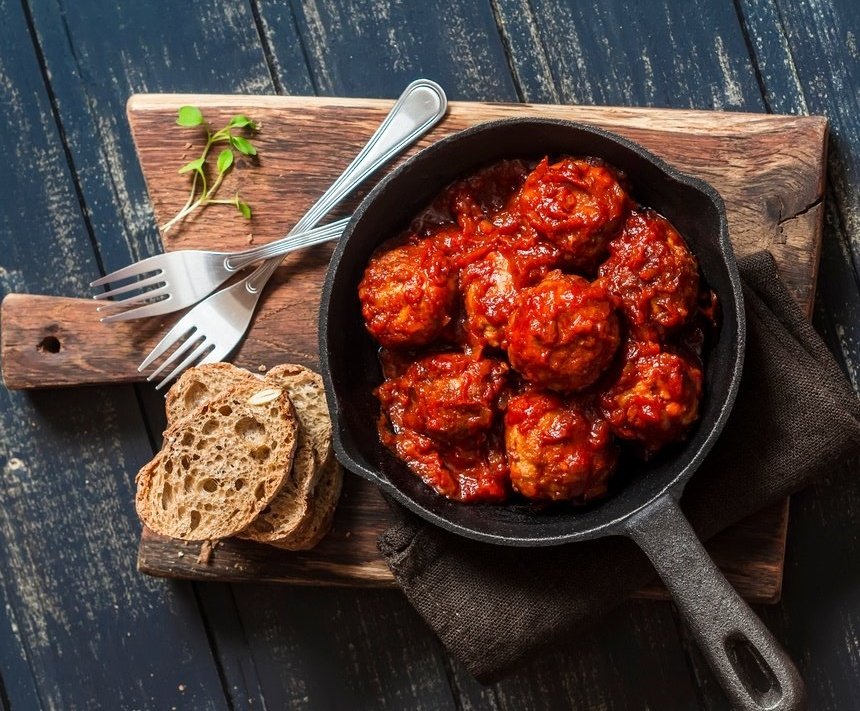How Do Italians Really Eat Pasta in Italy?
As a foreigner in Italy, figuring out the proper way to eat your pasta can be hard. Should you dust your penne in parmesan? Or, do you leave the sauce alone? How do real Italians eat pasta after all?
Is Italian Food Different in Italy?
Pasta in Italy is quite different from what’s served in Italian restaurants in America:
Alfredo sauce barely exists in Italy.
Rigatoni is a main dish—not a side.
Meatballs and spaghetti don’t go together.
If you didn’t grow up in Italy, all this pasta talk can feel perplexing. Luckily, if you follow these 10 simple rules below, you’ll be noshing like a Roman in no time. (Read all the way to the bottom for our easy recipe for classic carbonara).
10 Ways Italians Actually Eat Pasta
Italian Pasta Rule #1:
Add cheese only when offered some
As any Italian grandma will tell you, it takes time and skill to simmer up the perfect sauce. So, when you add a dollop of grated cheese before even tasting your pasta, it’s a bit like telling the cook that they forgot the salt. Most of the time, your sauce will be seasoned enough already. This is especially true for pasta with seafood. With dishes like tagliatelle alla bolognese or carbonara, though, an added sprinkling of extra cheese is customary. As a rule of thumb, only add grated cheese to your pasta dish if the waiter offers you a spoonful. If not, skip the cheese and savor your saucy goodness.
Italian Pasta Rule #2:
Pasta Portions are More Petite in Italy
American diners are used to being served mountains of spaghetti — Lady & the Tramp style. But, like cars and clothes, food portions are smaller in Italy. This is certainly true for pasta. When you order a plate of pasta in the motherland, don’t be surprised if they bring you an individual portion. Italians consider pasta tasty when just cooked, so there’s no doggy bag or leftovers here. If you’re still hungry after your tortellini, feel free to order a second course (secondo)—usually meat or fish.
Italian Pasta Rule #3:
What you eat in Rome. . . stays in Rome
Italy was a patchwork of disparate republics and kingdoms for most of its history — each with its own customs and cuisine. An attentive diner in Italy will quickly notice that there is no such thing as Italian food. While Romans like to relish rigatoni all’amatriciana, Sicilians like their pasta to swim in a sauce flecked with swordfish.
Before heading to Italy, do a little homework. Research which dishes the places you’ll be visiting is famous for. This way, when you’re in Rome, you’ll actually get to eat as the Romans do. If you’re unsure what to order, just ask the staff for the regional specialità – it’s guaranteed to be the tastiest, most authentic thing on the menu. Click here to unlock our 5 Favorite Historic Cafés in Rome.
Italian Pasta Rule #4:
Al dente is king. . . everywhere
Even if the sauce will change from town to town in Italy, there is one constant for pasta – mushy noodles are a big, big no-no. Al dente – signifying “to the tooth” in Italian” – is Italians’ preferred pasta texture. Generally, this means your pasta will still have a little bite when served. No matter where you travel on the Italian peninsula, you’ll be hard pressed to find a mountain of gluey, starchy goop.
Italian Pasta Rule #5:
Water and wine are pasta’s best pairing
Dinner is a sacred ritual in Italy – a time when family and friends gather, unrushed, around a shared table. As with any sacred rite, there’s acceptable and unacceptable behavior when eating in Italy. To learn how to eat spaghetti like the Italians, a good place to start is with your drink.
When eating pasta, Italians sip only two substances: water and wine. No Coca-Cola – No cappuccino – No juice. Beware that water must be ordered by-the-bottle in Italy – either still (acqua naturale) or bubbly (acqua frizzante). Unlike in the U.S., Italian waiters won’t fill your glass with water.
Italian Pasta Rule #6:
There’s more to life than red sauce
Tomatoes and their saucy offspring are synonymous with Italy. But, tomato-based sauces are mainly eaten in the country’s South. In other Italian regions, a panoply of tomato-free options abounds – including cacio e pepe (Rome), radicchio and gorgonzola (the Veneto), and squid ink sauce (seaside areas). So, relish your red sauce from time to time. . . but be sure to try out the other pastabilities.
Italian Pasta Rule #7:
Bread Only Sops Up Extra Pasta Sauce
Italian restaurants in the U.S. commonly crown their tables with a basket of rustic bread. This is less true in Italy. When Italians go out to eat, bread is generally an afterthought – used sparingly to sop up any sauce left on your plate. It’s not even eaten alongside the pasta or before. ((This may explain why Italians eat pasta each day and can still fit into those tight European jeans!)).
Italian Pasta Rule #8:
No meatballs – No chicken parm – No marinara
Before you step foot in Italy, you must accept one simple fact: American Italian food is not Italian food. Say it with us one more time, “American Italian food is not Italian food!”
Most of the dishes you’ll find in American Italian restaurants evolved in the U.S. So – when in Italy – you won’t find pasta with meatballs or chicken parm. or alfredo sauce – unless they’re trying to serve you Americanized junk. You will find hand-shaped tortellini, pillowy gnocchi, and luscious lasagna in Italy.
Italian Pasta Rule #9:
Twirl your fork (but you won’t seem more Italian)
To twirl or not to twirl? That is the question. Somewhere, somehow, Americans became convinced that real Italians twirl their spaghetti on a fork and spoon. Mind you; this is a fine way to eat your pasta. Go ahead and twirl, twirl, twirl. Just know that folks in Italy don’t necessarily eat pasta this way. You can just fork your fettuccine into your mouth. Translation: there’s no 100% “proper” way to eat spaghetti.
Italian Pasta Rule #10:
Don’t Limit Yourself to Just One Pasta Type
Italy boasts hundreds of pasta varieties. That’s enough for a lifetime of tasty trips. So, when you go to Italy, let your taste buds wander off the beaten track. Instead of ordering the same pasta repeatedly, try a new kind in each ristorante or region. We promise — your palate will be pleased. Moreover, you’ll likely discover your new favorite pasta along the way.
Now that you know how it’s done, you need to know how to order it!
Learn how to order food in Italy – Travel Tips for Dining Out
Go back















